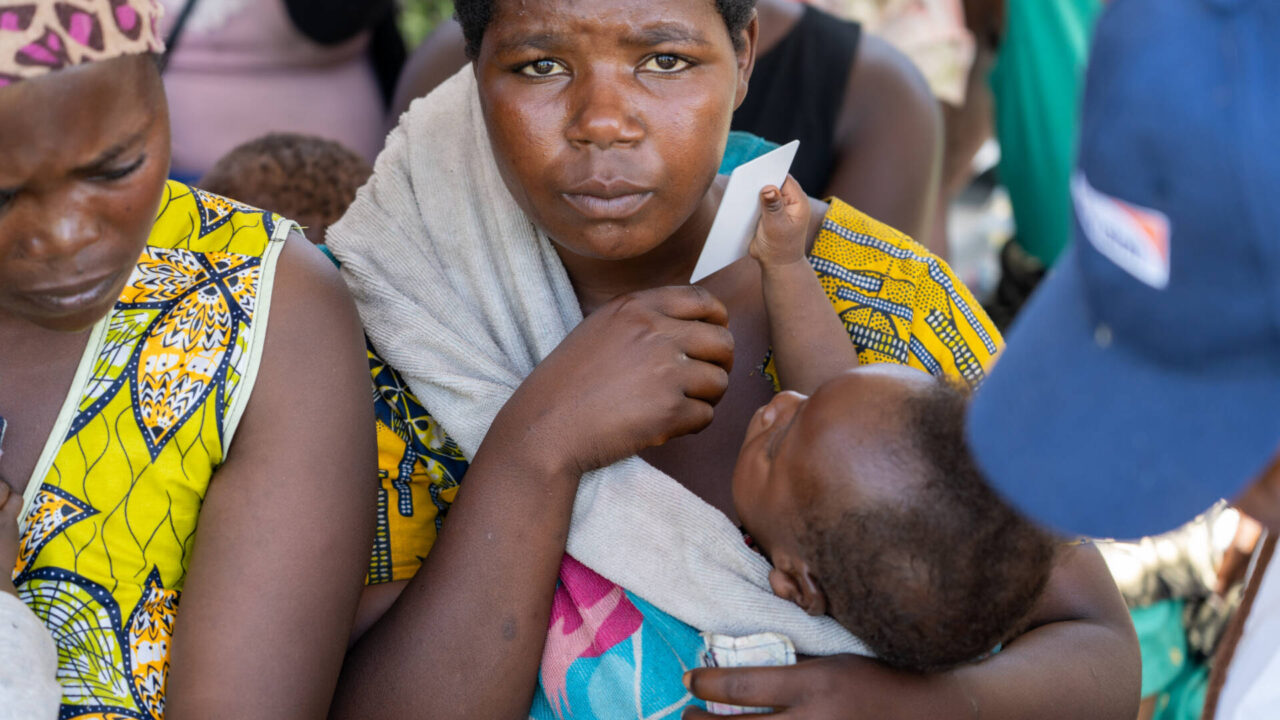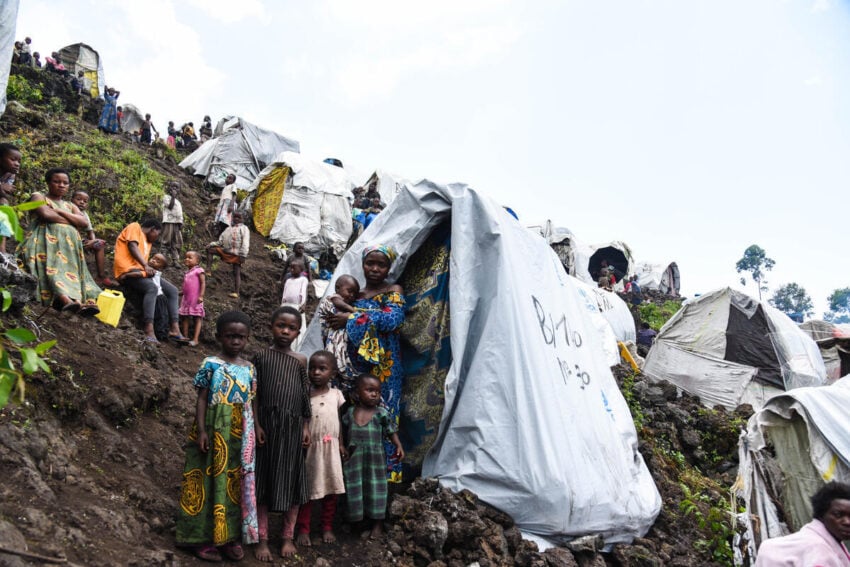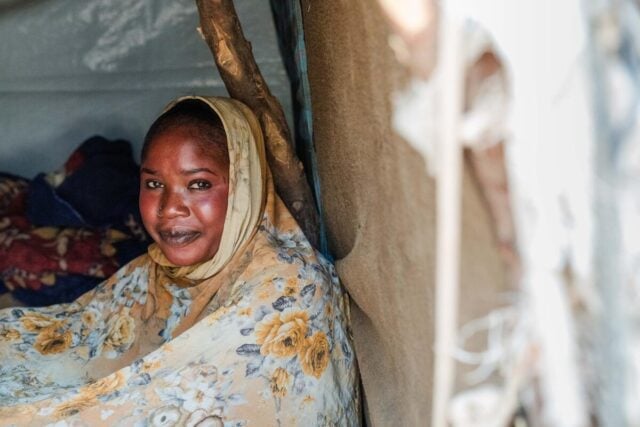The Democratic Republic of the Congo (DRC) is facing a complex and prolonged crisis, with over 15 million children suffering the impacts of armed conflict, hunger, and disease outbreaks. The humanitarian situation is rapidly deteriorating due to a recent surge of violence. On January 27, 2025, reports confirmed that a non-state armed group seized parts of Goma, placing tens of thousands of people at risk of physical harm and forced displacement. This alarming development has heightened fears of widespread violence and further compounded the dire humanitarian crisis, with food insecurity and displacement continuing to escalate across the region.
“The emotional toll on children cannot be ignored,” said Patrick Saah, World Vision’s director of programs in DRC. “We are seeing an entire generation of Congolese children being destroyed by war, violence and displacement.”
DRC conflict: Facts, FAQs, and how to help
Explore facts and FAQs about the crisis in the DRC, and learn how you can help.
- Fast facts: DRC situation and conflict
- What is currently happening in the DRC?
- How are conditions in the DRC affecting children?
- What are some of the greatest needs of people in the DRC?
- What is World Vision doing to help vulnerable people in the DRC?
- How can I help affected children and families in the DRC?
Fast facts: DRC situation and conflict
- The Democratic Republic of the Congo, which spans an area comparable to Western Europe, is the second-largest country on the African continent and sits on the equator.
- The DRC shares its borders with nine neighboring countries: Angola, Burundi, the Central African Republic, the Republic of the Congo, Rwanda, South Sudan, Tanzania, Uganda, and Zambia.
- The DRC is one of the five poorest nations in the world, despite its abundance of natural resources.
- Since gaining independence in 1960, the DRC has experienced persistent hostilities.
- In 2022, a surge in violence in the eastern provinces of Ituri, North Kivu, and South Kivu exacerbated insecurity in the DRC, causing extensive internal displacement and substantial loss of life.
- More than 27 million people need humanitarian aid, according to the United Nations.
- According to the U.N. Refugee Agency (UNHCR), 7 million people have been displaced within the DRC due to conflict as of December 2022. Over 1 million have crossed borders seeking asylum.
- In 2025 alone, an estimated 400,000 people have fled armed conflict in eastern DRC. By late January, the escalation of hostilities, including the seizure of parts of Goma by a non-state armed group, intensified the levels of violence, displacement, and food insecurity in the region.

What is currently happening in the DRC?
The DRC, a country of over 113 million people in Central Africa, is facing one of the world’s most severe and complex humanitarian crises. In the eastern city of Goma and nearby camps, tens of thousands of people are at imminent risk of harm and displacement due to a surge in violent conflict.
Reports indicate that a non-state armed group has claimed control over parts of Goma, a city that borders Rwanda and serves as a humanitarian hub for the eastern provinces of North and South Kivu. This armed offensive has cut off Goma from the rest of the DRC, shuttered key supply lines, and forced the evacuation of humanitarian workers. As violence escalates, fears of mass casualties and worsening conditions are mounting.
Humanitarian impact
An estimated 400,000 people have fled violence in eastern DRC in 2025 alone, with many pouring into Goma or makeshift displacement camps in the region. This adds to the estimated 7 million people already displaced across the DRC due to ongoing conflict, primarily in North and South Kivu and Ituri provinces. These areas have been mired in violent clashes between government forces and non-state armed groups since March 2022.
“The situation is terrible. There are not only thousands of people caught in the middle or fleeing this violent conflict but now we can’t reach the tens of thousands of people who were previously relying on us for food and other vital support,” said David Munkley, World Vision’s head of operations for eastern DRC. “Key roads surrounding Goma are blocked, and the city’s airport can no longer be used for evacuation and humanitarian efforts. Power and water have reportedly been cut to many areas of the city.”
In addition to conflict, eastern DRC faces compounding crises:
- Flooding in South Kivu in May 2023 destroyed over 3,000 homes and killed hundreds.
- Health crises, including repeated Ebola outbreaks, measles epidemics, and cholera, further strain the already fragile healthcare system.
- Food insecurity is widespread, with millions struggling to access basic necessities.
“Displaced women, children, and men are not only fearful and in despair but feel powerless. They are now on the run from the camps or homes where they were living, not knowing where they are going to stay or what they are going to eat. Many are children,” said Aline Napon, World Vision’s DRC national director.
How are conditions in the DRC affecting children?
The country’s humanitarian crisis is severely impacting children, putting their safety, health, and futures at great risk. UNICEF estimates 15.4 million children in the DRC need humanitarian aid. Key challenges include:
- Violence and trauma: Children are exposed to violence, both directly and as witnesses to the destruction and loss of lives. Some children are being forcibly recruited as child soldiers. Prolonged exposure to conflict can lead to long-lasting physical and psychological trauma.
- Lack of healthcare: The healthcare system is stretched thin, making it challenging for children to get the care they need. Outbreaks of Ebola, malaria, and cholera are further exacerbating the health risks faced by children.
- Malnutrition and food insecurity: Conflict has disrupted agricultural activities, further limiting access to nutritious food — particularly for children who are displaced. Many children in the DRC experience food insecurity and malnutrition, including 1.3 million children who suffer from severe wasting. Malnutrition not only hampers physical growth but also affects children’s ability to learn and develop properly.
- Education disruptions: Many schools are damaged or destroyed, and conflict often makes it unsafe for children to attend class. An estimated 2.7 million children in the DRC are in need of education support, depriving them of opportunities to learn and build a brighter future.
- Exploitation and abuse: Due to a breakdown in social structure and the presence of armed groups, children in the DRC are more vulnerable to exploitation, including child labor, sexual abuse, and trafficking. The displacement that millions are experiencing further adds to these vulnerabilities, as children are at a higher risk of becoming separated from their families and experiencing abuse without their protection.
World Vision’s David Munkley shared his concern regarding the January 2025 outbreak of violence: “My biggest fear is that we are going to see a massive escalation of children and their families on the move and be unable to easily assist. On top of this, past spikes in violence have put children at risk of being recruited into the armed groups or led to increases in girls and women experiencing sexual violence.”
What are some of the greatest needs of people in the DRC?
The people of the Democratic Republic of the Congo face immense challenges, with food security remaining a critical issue. A staggering 62% of the population (about 60 million people) live on less than $2.15 per day. Conflict, natural disasters, and economic instability continue to complicate the food situation. In 2024, 27 million people needed humanitarian assistance due to conflict, food insecurity, weather-related impacts, and epidemics. Forced displacement in the most affected provinces is expected to continue in 2025, worsening the already dire humanitarian emergency.
The DRC has also become the global epicenter of the Mpox epidemic, recording the highest number of cases worldwide. This, compounded by recurring outbreaks of Ebola and cholera, has further strained fragile healthcare systems.
The recent escalation of violence in Goma and its surrounding areas has intensified the crisis. Tens of thousands of people have fled their homes, many of whom are left without access to food, clean water, or shelter. Humanitarian operations have been severely disrupted or suspended due to insecurity, roadblocks, and armed conflict, leaving vulnerable communities in desperate need.
Adding to these challenges, in recent years the DRC has also experienced catastrophic flooding and the Mount Nyiragongo volcano eruption.
What is World Vision doing to help vulnerable people in the DRC?
In our 2024 response programming, World Vision dedicated its efforts to improving the health, nutrition, protection, and education of 2.7 million of the most vulnerable children in the Democratic Republic of the Congo. Our broader goal is to provide vital aid to 10 million vulnerable women and men facing extreme hardship. In 2023, World Vision reached more than 3.4 million people through our lifesaving efforts and programming in the DRC.
However, due to ongoing insecurity, roadblocks, and armed conflict, World Vision has suspended aid operations in certain areas, leaving tens of thousands without food, protection, and essential supplies.
Key infrastructure — including roads, supply lines, and the city’s airport — is inoperable following the January 2025 violence, and power and water have been cut off in many areas. World Vision’s staff in Goma have sheltered in place.



